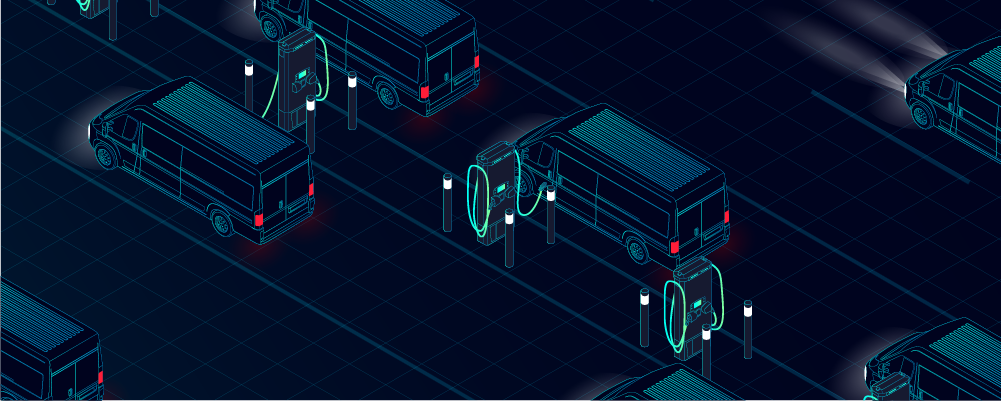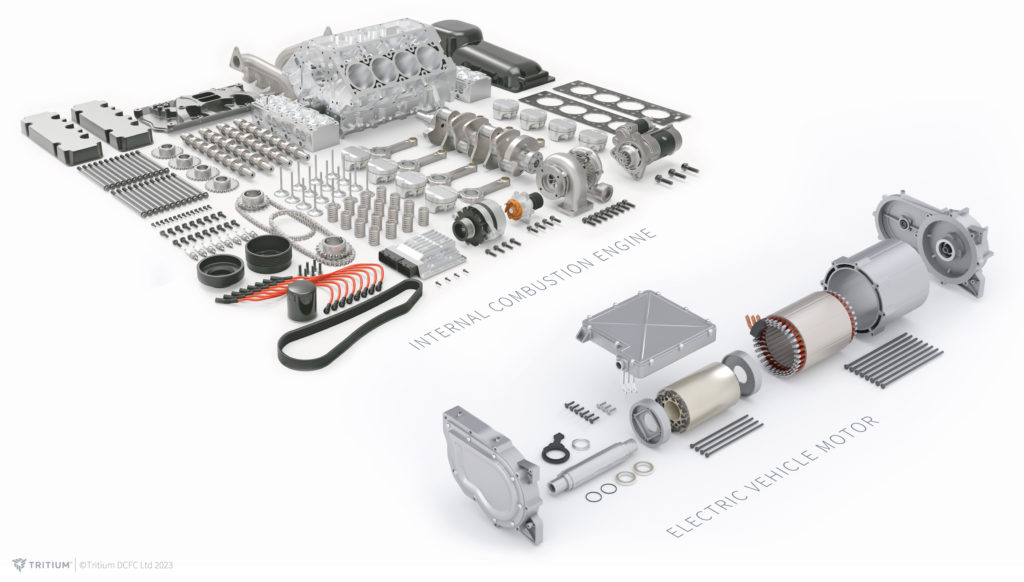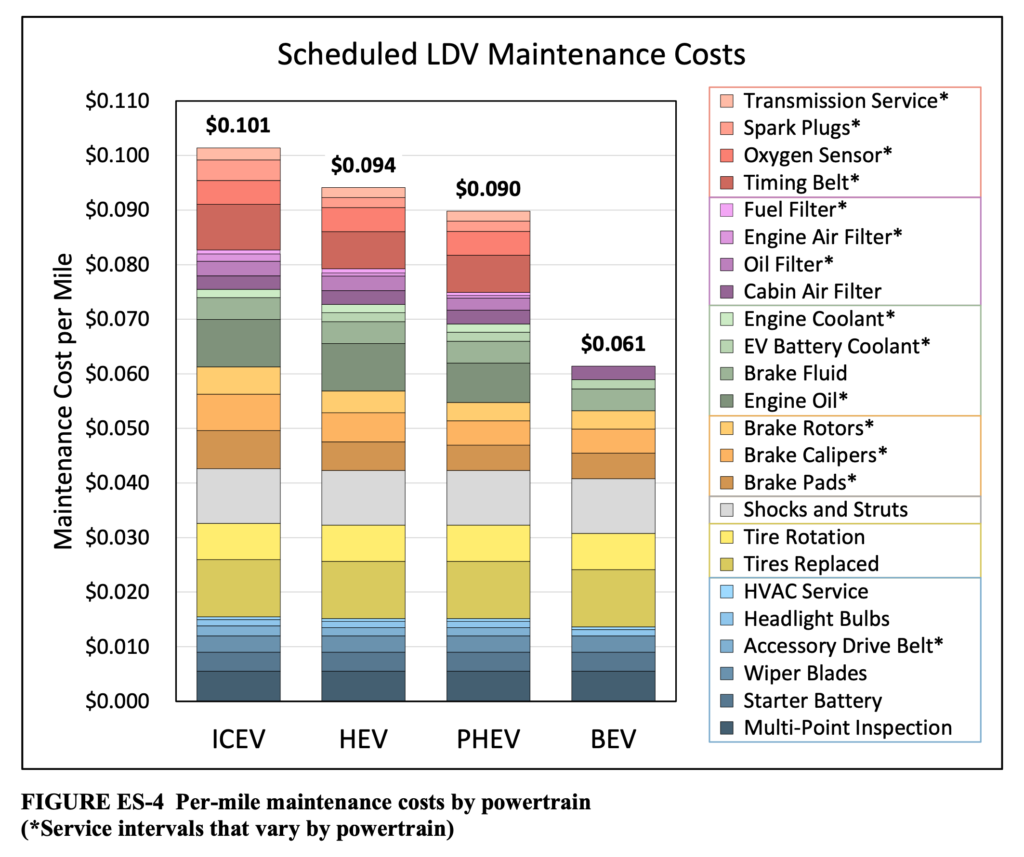Why Electrifying Your Fleet is Good for the Earth and Your Bottom Line

Sustainability is crucial to building a better world. During Earth Month we’re exploring ways businesses can improve sustainability through electric vehicles and electric vehicle charging.
Electrifying transportation is key to reducing greenhouse gas (GHG) emissions and mitigating the effects of global warming. According to the International Energy Agency (IEA), about 37% of CO2 emissions in 2021 came from the transportation sector. Transitioning to electric vehicles (EVs) can help reduce GHG emissions and avoid climate disaster.
But there are immediate benefits to electrifying your fleet: Switching your fleet to EVs can save you a lot of money in long-term fuel and maintenance costs, give you more control over when and where you fuel or charge up, and even help you operate in more locations across the globe.
EVs Are Good for the Planet
EVs eliminate tailpipe emissions and greatly reduce GHG emissions even when they’re charged with power generated with fossil fuel powerplants. EVs are far more efficient than ICE vehicles, which means it takes less energy of any type (even fossil fuel energy) to move them. Higher efficiency means fewer GHG emissions. Additionally, it’s easier to control emissions at a few power plants than it is to control them in millions of vehicles. Lastly, EVs can also easily be powered by renewable energy sources like solar, wind, wave, and geothermal power.
Switching to EVs can also help offset your business’ carbon emissions, reducing tax burdens and helping to avoid any future penalties or fines for carbon emissions.
EVs Last Longer
EVs are inherently less complex than ICE vehicles. According to a recent Forbes article, the typical internal combustion engine (ICE) drivetrain has about 2,000 moving parts while a typical EV’s drivetrain has about 20. And because EVs have fewer moving parts, it’s estimated their drivetrains (motors and transmissions) should last much longer than their ICE counterparts. Many EV drivetrains are engineered to run for up to 500,000 miles without service.

EVs Are Cheaper And Easier to Maintain
According to a study by the US Office of Energy Efficiency and Renewable Energy, the estimated scheduled maintenance costs for ICE vehicles is approximately 10.1 cents per mile compared to just 6.1 cents per mile for EVs.
According to Consumer Reports, EV drivers pay half as much for repairs and maintenance. Consumer Reports also found that EV drivers can expect to save an average of $4,600 in repairs and maintenance over the life of the vehicle.
More research by the Department of Energy’s Argonne National Laboratory found that EV maintenance costs are 30% lower than ICE vehicles.

EVs Have More Stable “Fuel” Costs
Diesel and gasoline prices fluctuate wildly, but they have steadily rose over time and are subject to large price increases due to conflicts, natural disasters, and political turmoil. These events often have more of an effect on fossil fuel prices than electricity prices. And while electricity prices have risen significantly in Europe, they are still lower than the price of gas or diesel when used for transportation. A recent study by Dutch automotive lease provider Leaseplan found that despite energy price inflation, “fuel costs remain significantly lower for electric cars than petrol and diesel cars: fuel costs represent 15% of the total cost of ownership of an EV, while this is 23% and 28% for petrol and diesel drivers.”
EVs will almost always have lower fuel costs than ICE vehicles because they are more efficient. According to Motortrend Magazine, between 74 and 84 percent of the energy contained in gasoline is lost to heat and friction in an ICE vehicle. If you were to spend €1.80 on a liter of gasoline, only €.36 worth of it is used to move your vehicle. In comparison, only 31-35 percent of the energy in an EV’s batteries is wasted: 10 percent of the source energy from the grid lost in the charging process, 18 percent lost to the drivetrain motor components, up to 4 percent lost to auxiliary components, and another 3 percent lost through powertrain cooling and other vehicle systems.
It’s More Convenient to Charge an EV
ICE vehicles rely on networks of fuel stations that may or may not be near your established routes. If you build your own charging network, EVs give you the freedom to charge up when and where you want. Installing EV fast chargers at your offices or distribution centers can:
- Reduce extra mileage and wear and tear associated with out-of-the way fuel stops
- Reduce vehicle and employee downtime during stops
EVs can charge up overnight and run all day. Amazon plans to deploy a fleet of more than 100,000 EVs for last-mile, in-town deliveries by 2030. The retail giant will use Rivian delivery trucks and trucks from other manufacturers for deliveries across the world. Amazon expects the trucks to run for 12 hours a day and to charge up using DC fast chargers at Amazon distribution centers. The vans are expected to have a 300,000-mile lifespan before major maintenance, greatly reducing total cost of ownership. With these Rivian vans and DC fast charging at its distribution centers, Amazon can eliminate fuel stops and reduce downtime during operating hours.
There Are Financial Incentives for EVs
Many governments around the world are offering financial incentives to make the switch to EVs. Nearly every country in Europe also offers some form of incentive to purchase EVs and EV charging equipment. The European Automobile Manufacturer’s Association (ACEA) has compiled a comprehensive list of EV incentives by European member countries. Many countries are offering thousands to offset the cost of new EVs, and most also offer incentives to purchase EV charging equipment. For example, France is offering up to 40% off the purchase and installation costs of EV charging points for businesses and public entities. There are also many other regional and city incentives available throughout Europe.
In the United Kingdom, the government offers up to £2,500 in incentives for the purchase of a new electric car. Additionally, the UK government has approved £30 million of funding in 2022 to 2023 for fast charging infrastructure, including DC fast chargers. The UK government is authorizing up to £13,000 in grant money per public charge point.
In the US, many states offer tax credits for electric delivery vehicles, and the $1.2 trillion Bipartisan Infrastructure Law includes $5 billion to help states build extensive EV charging infrastructure. There are also many state and regional incentives in the form of tax credits or grants available in the US. You can read more about them in our article here.
In Australia, the Treasury Laws Amendment (Electric Car Discount) Bill provides $2000 off the price of battery-electric and plug-in hybrid vehicles (PHEV). The bill also delivers Fringe Benefits Tax (FBT) exemptions for fleets and novated leases. Australia also raised the Luxury Car Tax threshold for low-emission vehicles to $84,916, from $71,849. The FBT savings amount to about $4700 for an individual.
Consultation
Our experts can help you plan your fleet’s transition to electric vehicles. Our experts have decades of experience helping logistic companies, public transportation agencies, trucking companies, and rideshare companies integrate EVs and EV fast charging into their business models.